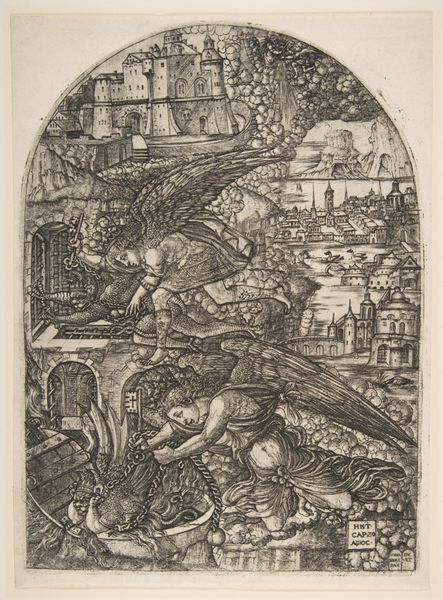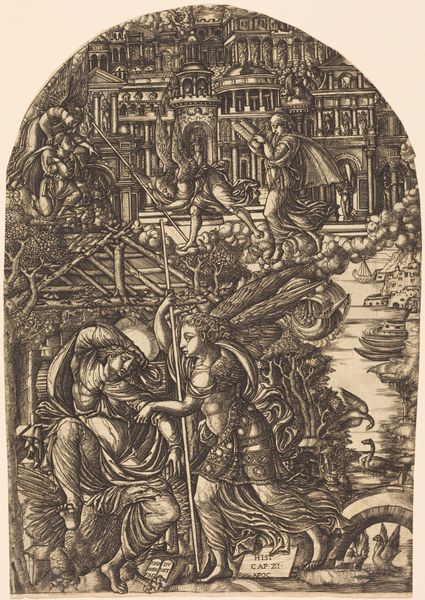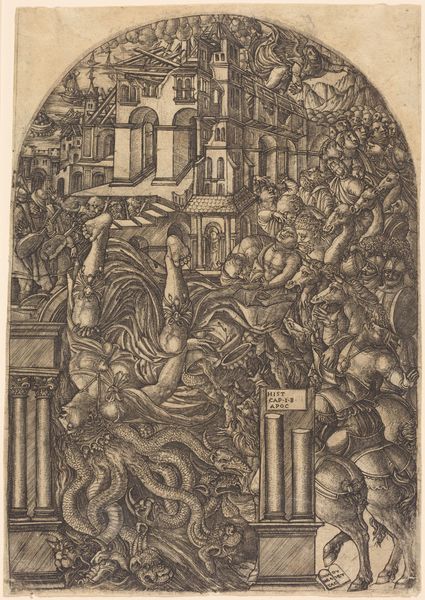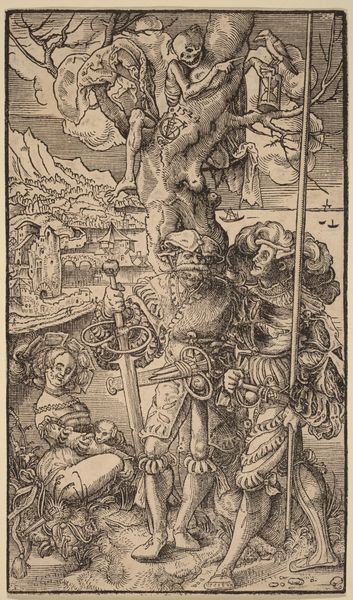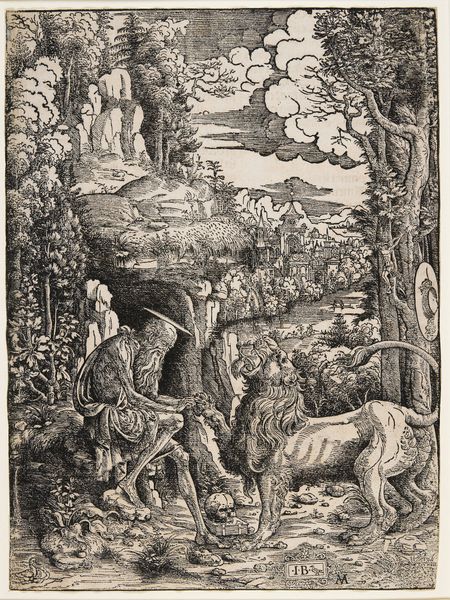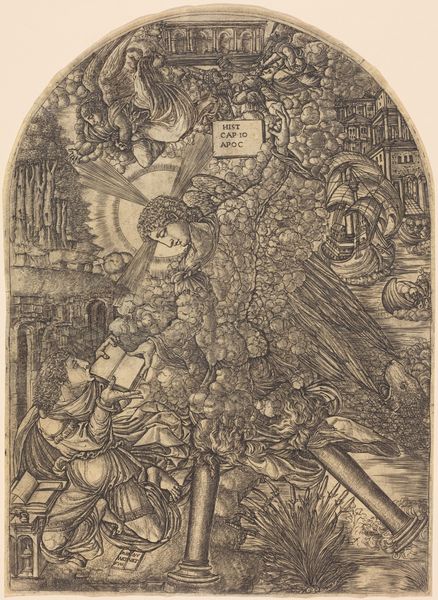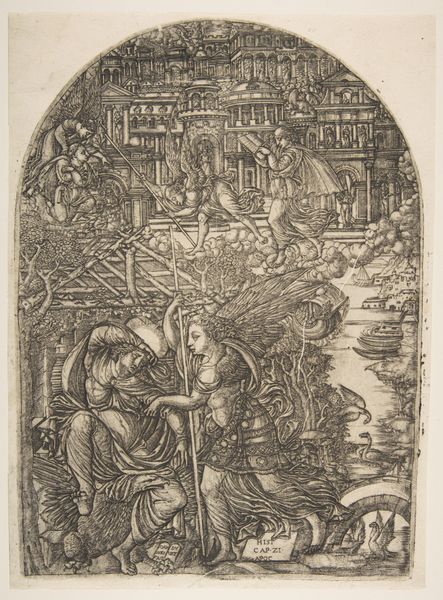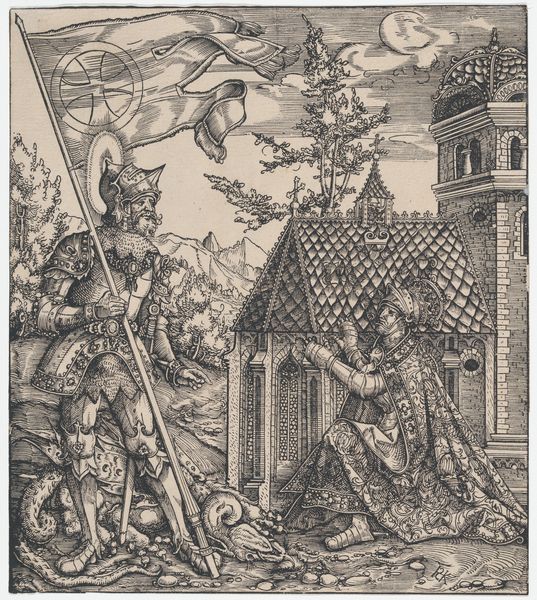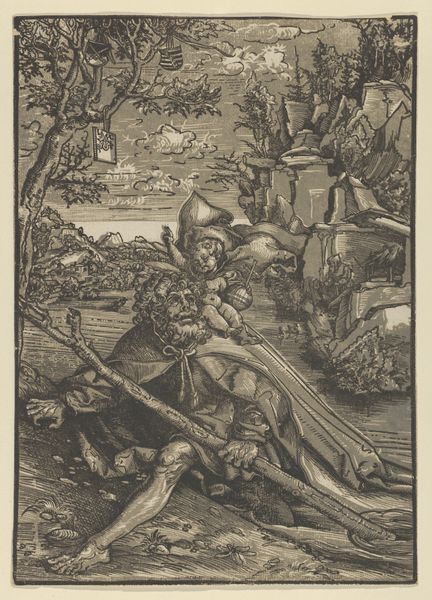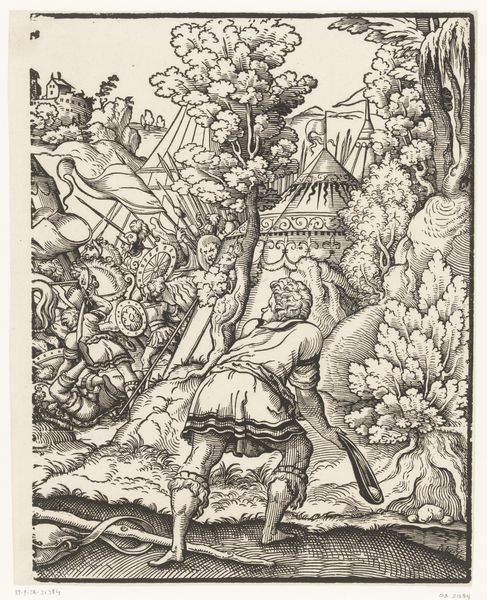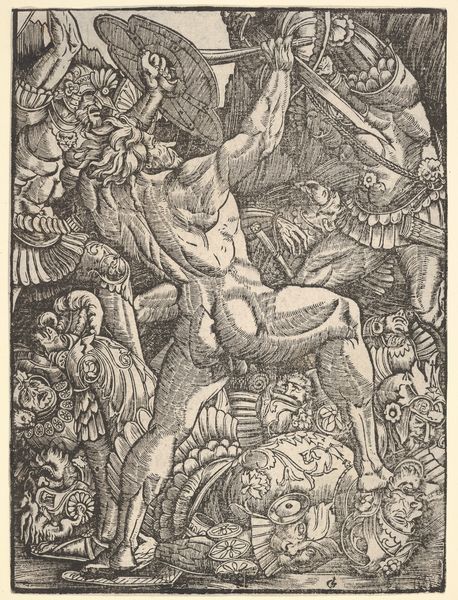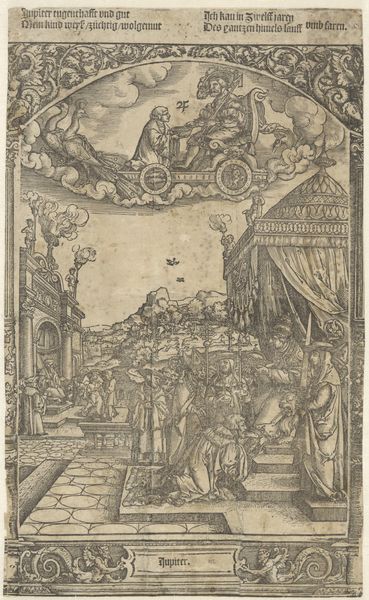
print, engraving
#
allegory
# print
#
figuration
#
line
#
history-painting
#
northern-renaissance
#
engraving
Copyright: National Gallery of Art: CC0 1.0
Editor: We're looking at "Satan Bound for a Thousand Years," an engraving by Jean Duvet, created sometime between 1546 and 1556. It's densely packed, the textures created by these tiny, swirling lines! What stands out to me is the division of the composition into distinct zones, almost like a graphic novel panel. How do you interpret this work? Curator: Indeed, the stratified composition is central to its visual impact. Notice how Duvet has segmented the space into earthly and celestial realms, yet united them through the forceful diagonal lines formed by the bodies of the angels and the swirling vortex of cloud. The use of line—the sheer quantity of it—is itself significant. It contributes to a sense of almost claustrophobic intensity. Consider also how the hatching both defines form and generates light and shadow. Do you perceive a particular emotional quality emerging from this interplay of line and form? Editor: Yes, definitely a sense of drama! The intense hatching does give it a very charged feel. Is there a specific way the arrangement adds to that emotional impact? Curator: Precisely. The compressed space contributes to the sense of divine struggle, and consider the poses: figures are in positions of constraint, being bound, falling. This compositional compression echoes the thematic restraint imposed upon Satan. It’s not merely about representation, but the orchestration of form to elicit a specific emotive and intellectual response. Look closely at how each individual figure and scene interlocks with another to push and pull at the borders of the artwork. The use of light and shade, as well as positive and negative space, has a clear direction. Do you see any implied triangles in this picture, as axes and fulcrums to which our eyes adhere? Editor: Yes! I see some subtle geometry between the angels' heads, guiding us from the top right corner to the bottom left. I never would have noticed that! Curator: Precisely! So it is not only the represented content, but the purely formal relations of lines and forms which deliver meaning. Editor: I can see how the composition directs our eyes, reflecting the overall sense of divine order imposed upon chaos! Thanks!
Comments
No comments
Be the first to comment and join the conversation on the ultimate creative platform.
